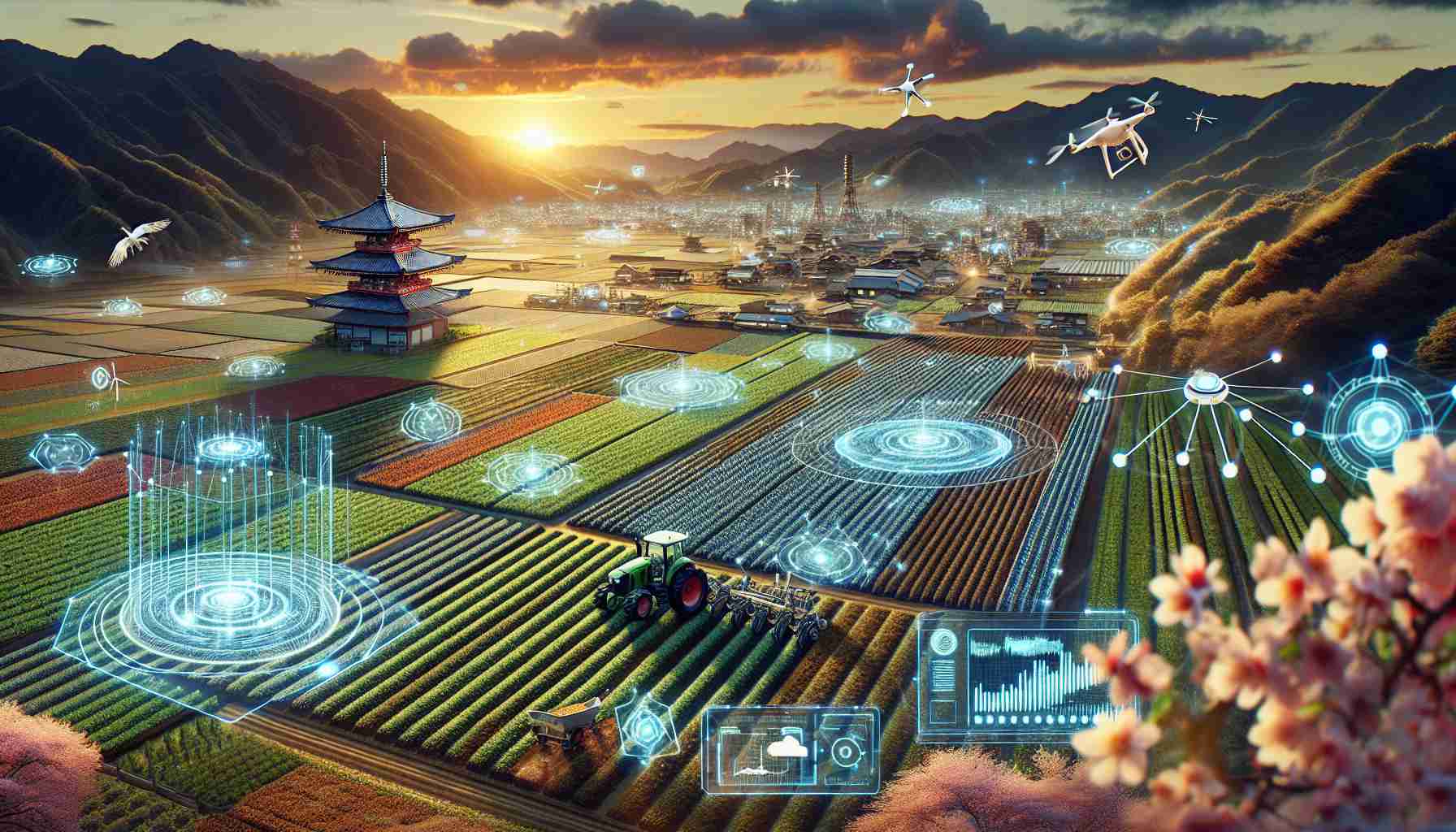- Japan is transforming agriculture using tech innovations to address workforce and population challenges.
- AI-driven robots and drones boost productivity and sustainability by optimizing crop management and reducing labor costs.
- Startups are developing precision planting and harvesting systems using machine learning for maximum yield and minimal waste.
- AI-enhanced vertical farms support urban food production, improving food security in urban areas.
- Japan’s tech advancements in agriculture are influencing global sustainable food production practices.
Japan is redefining agriculture, leveraging revolutionary technologies to combat the challenges posed by a decreasing rural workforce and aging population. Traditionally dependent on a significant workforce, Japan’s agricultural sector is now experiencing a tech-driven transformation that promises to change the landscape of food production.
One of the key players in this revolution is Artificial Intelligence (AI), which is being harnessed to enhance productivity and sustainability. By employing AI-driven robots and drones, Japanese farmers are now able to efficiently monitor crops, predict growth patterns, and optimize resource usage. These technologies not only help in better crop management but also significantly reduce labor costs and time.
AI’s integration into agriculture doesn’t stop at crop management. Startups are developing AI systems capable of precision planting and harvesting. These systems utilize machine learning algorithms to make data-driven decisions about when and how to plant and harvest crops, ensuring maximum yield while minimizing waste.
Furthermore, vertical farming, another futuristic approach, is intertwining with AI to create urban farms that can produce fresh food closer to the urban population. By reducing reliance on traditional farming areas, these AI-enhanced vertical farms contribute to food security in a rapidly urbanizing world.
As Japan continues to innovate, its fusion of AI and agriculture sets a precedent for other nations, offering a glimpse into the future of sustainable food production. This tech revolution is not only redefining agriculture in Japan but is poised to influence global food systems profoundly.
Discover How Japan’s AI-Powered Agriculture Is Reshaping Global Food Systems
1. What are the latest innovations in Japanese agricultural technology?
Japan’s agricultural sector is at the forefront of technological innovations that are transforming traditional farming practices. Among the latest advancements are:
– AI-Powered Robots and Drones: These are being used for precise crop monitoring, disease detection, and pest control. AI-driven devices can analyze vast amounts of data to predict growth patterns and optimal harvesting times, enhancing productivity.
– Vertical Farming Systems: Integrating AI with vertical farming allows for the creation of urban farms that grow fresh produce with minimal resource use. These systems use sensors and AI algorithms to maintain optimal light, temperature, and water levels, leading to consistent yields regardless of external conditions.
– Precision Agriculture: This involves the use of machine learning to optimize planting and harvesting, which leads to maximum yield and reduced waste. Precision agriculture tools can generate detailed soil maps to aid in tailored fertilization strategies.
For more on AI advancements, visit Ministry of Economy, Trade and Industry (METI).
2. How is AI impacting the economics of Japanese farming?
The integration of AI in agriculture is having profound economic impacts in Japan:
– Cost Efficiency: AI technologies reduce labor costs by performing tasks traditionally done by humans. This is crucial given Japan’s declining rural workforce and aging population.
– Enhanced Productivity: Through efficient resource management and precise agricultural operations, AI helps increase productivity, leading to better profitability margins for farmers.
– Market Competitiveness: By adopting AI, Japanese farmers can maintain competitiveness in the global market, as these technologies enable higher quality and more sustainable produce.
For deeper insights, see resources on Govt. of Japan’s Official Website.
3. What challenges does Japan face in implementing AI in agriculture, and how can they be overcome?
While the benefits are substantial, several challenges arise in implementing AI in agriculture:
– High Initial Costs: The upfront investment in AI technology can be prohibitive for small-scale farmers. However, government subsidies and shared resources may mitigate these costs.
– Technological Literacy: Effective use of AI requires adequate training. Promoting agricultural education and digital literacy programs can ensure that farmers effectively integrate and manage new technologies.
– Data Privacy Concerns: As AI systems collect and analyze vast amounts of data, ensuring data security and privacy becomes paramount. This can be addressed through robust cybersecurity measures and clear regulations.
Japan’s approach to overcoming these challenges is through government support and collaboration with private tech companies, fostering an environment conducive to innovation and sustainable agriculture.
Explore governmental initiatives at Ministry of Agriculture, Forestry and Fisheries (MAFF).
In conclusion, Japan’s embrace of AI in agriculture is not merely a local phenomenon; it stands as a pioneering model with global implications for food security and sustainability. As other countries look to Japan, they will find both inspiration and practical strategies for integrating cutting-edge technology into their agricultural practices.


















